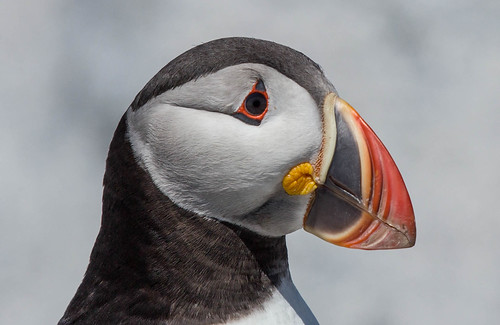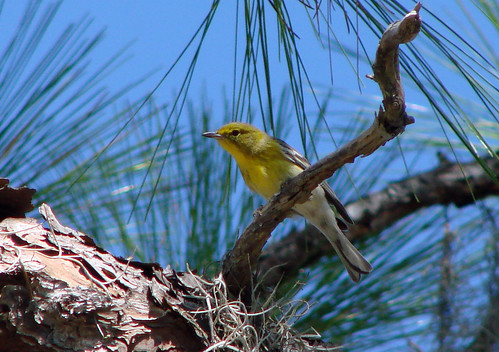 |
| Puffin under blacklight. Photo by Jamie Dunning. |
On the other side of the globe, NASA satellite images of penguin poop led researchers to discover a supercolony of more than 1.5 million Adélie Penguins in the Danger Islands off the Antarctic Peninsula’s northern tip. This is especially good news because penguin populations are declining grievously along the western side of the Antarctic Peninsula, due primarily to climate change. The researchers also found several populations of more than a hundred Gentoo Penguins and one small population of Chinstrap Penguins; this was reported this week in Nature. (Story in USA Today)
Also in Antarctica, Eddie Gault of the Australian Antarctic Program left a camera at the Auster Rookery near Australia’s Mawson research station, and soon two Emperor Penguins investigated. They flipped the camera over and somehow produced a 38-second selfie video which has gone viral.
The Cornell Lab of Ornithology’s Project FeederWatch posted an article this week by a researcher trying to tease out why Hairy and Downy Woodpeckers look so similar. They do belong to the same genus, but the Hairy is more closely related to the White-headed and Red-cockaded Woodpeckers while the Downy is more closely related to the Ladder-backed and Nuttall’s Woodpeckers. Using citizen science data from participants of FeederWatch, Gavin Leighton concluded that Downies are probably using their similarity to Hairies and their own dominant behaviors to trick other birds into thinking they’re the larger, tougher Hairy Woodpecker. He says this supports what is called the “Innocent Bystander Trickery Hypothesis,” but will be following up with more studies.
Finally, in Florida, a judge has lifted a restraining order that was keeping bulldozers from destroying one of the last stretches of endangered pine rockland in the nation as a lawsuit plays out. The Walmart developer is planning apartments, a Chili’s, an LA Fitness, and of course a Walmart on the endangered habitat. The Wildlands Association, Tropical Audubon, and the Miami Pine Rockland Coalition claim in the lawsuit that the US Fish and Wildlife Service incorrectly permitted Ram Realty to build on the land, using the corporation’s own environmental assessment without considering peer-reviewed research or concerns by other groups or the general public.
As the general public grows increasingly distanced from accurate information about ecology and species diversity, and as the Trump Administration continues stripping science and conservation from the EPA, US Fish and Wildlife Service, and other governmental units charged with protecting our air, water, and land, I’m afraid we’ll be seeing more and more of these kinds of permanent losses. (Story in Miami New Times)



